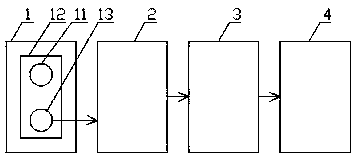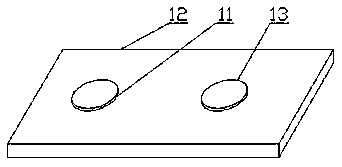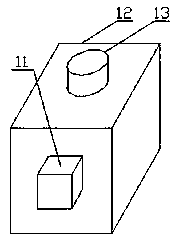Active excitation touch sensor based on modal analysis and application method
A tactile sensor and modal analysis technology, applied in the field of sensors, can solve the problems of complex structure, complex production, dependence, etc., and achieve the effect of simple structure, simplified structure, and easy production and processing.
- Summary
- Abstract
- Description
- Claims
- Application Information
AI Technical Summary
Problems solved by technology
Method used
Image
Examples
Embodiment 1
[0032] Example 1. An active excitation tactile sensor based on modal analysis, which consists of Figure 1-Figure 3 As shown, it includes a tactile sensing module 1, the tactile sensing module 1 is connected to the conditioning circuit module 2, and the conditioning circuit module 2 is connected to the modal analysis module 3; the tactile sensing module 1 includes an active excitation vibration source 11, and the active The excitation vibration source 11 is connected to the vibration sensor 13 via the conduction base 12, and the vibration sensor 13 is connected to the conditioning circuit module 2;
[0033] The conditioning circuit module 2 is used to perform noise reduction and filtering processing on the signal output by the tactile sensing module 1;
[0034] The modal analysis module 3 is used to perform modal parameter identification, extraction and comparative analysis on the output signal of the conditioning circuit module 2 . The modal analysis module 3 identifies and...
PUM
 Login to View More
Login to View More Abstract
Description
Claims
Application Information
 Login to View More
Login to View More - R&D Engineer
- R&D Manager
- IP Professional
- Industry Leading Data Capabilities
- Powerful AI technology
- Patent DNA Extraction
Browse by: Latest US Patents, China's latest patents, Technical Efficacy Thesaurus, Application Domain, Technology Topic, Popular Technical Reports.
© 2024 PatSnap. All rights reserved.Legal|Privacy policy|Modern Slavery Act Transparency Statement|Sitemap|About US| Contact US: help@patsnap.com










